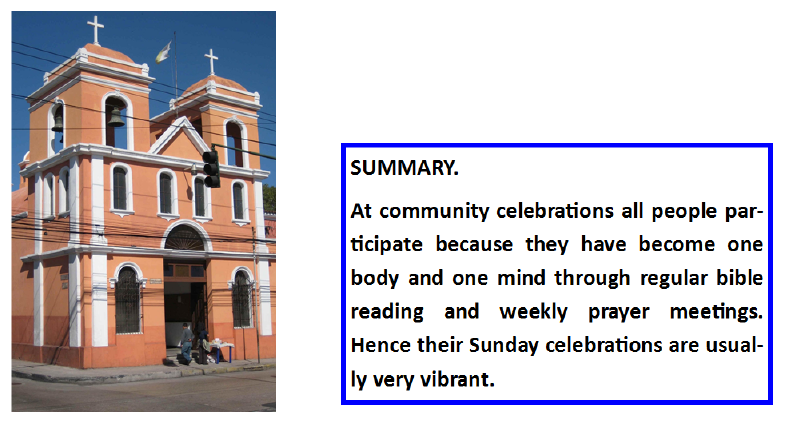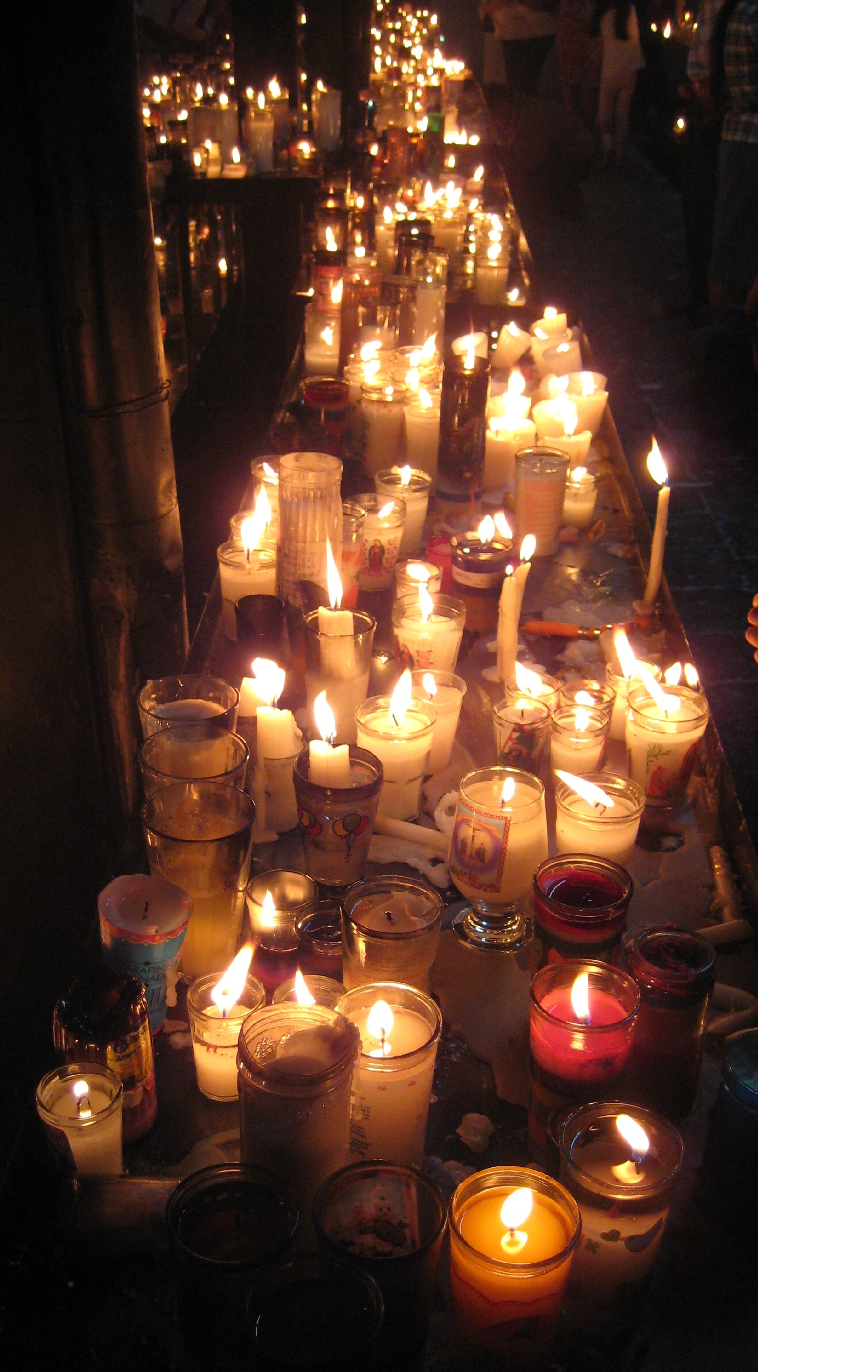
4. Community Celebrations
|
This is the fourth of a series of six. At the Fifth General Conference of Latin American bishops in Aparecida, the bishops introduced two new concepts into the daily praxis of the church: the equality of all as disciples and missionaries, and the pluralism of ecclesial practices. The first is obvious from the very title of the document (“Disciples and Missionaries of Jesus-Christ”). The second is implicit: if in the body of Christ there is a plurality of gifts, there must also be plurality of practices in all areas, in worship as in ministry. The house churches I visited are communities of missionary disciples. They all engage in missionary work on a regular basis, e.g. one month per year, or several weeks of door to door visits during Advent or Lent. These house churches are Aparecida in action. Let us look at one aspect of the pluralism of their liturgical practices. But be aware: some of these practices stretch the limits of liturgical and canonical regulations.
Parish holy hours are quite similar, except that the consecrated host (luna) is brought from the tabernacle processionally with acolytes holding candles, and returned at the end. This is done either by a Eucharistic minister or a priest. There is a holy hour in all parishes on Tuesday evening. How generalized are such practices? Not very much, as the traditional notions of inequality and uniformity still prevail. Thus, in a dynamic parish where the pastor has prepared his communities for Eucharistic celebrations without a priest when he is out of town, he insisted on saying five Masses every Sunday; for him and most faithful a Mass is still mainly defined by the transubstantiation. What will happen in the near future when a neighboring parish will ask him to say five more Masses in replacement of their departed pastor? Are parishes mainly sacramental stations from which priests are taxied in and out, following the clock of their Mass schedules? This is likely to be the case in a church of cultic services, but not so in a church of “Disciples and Missionaries of Jesus-Christ,” a church of equality and plurality of charisms. It is easy to see how the practices of small communities can shed some light on the assembly liturgies described previously: nearly all participate, people from the first to the last pew; they arrive and sing before the beginning of the liturgy, and they linger on, without rushing to the door at the end. I have seen the Sunday liturgies of such communities, some of which involve several hundred people. Wouldn't this seem the ideal Sunday celebration? If it is, it would also appear that the parish church must foster many small communities, and that the parish itself becomes the community of communities. So far in most US parishes, this is more a rhetoric than a reality.
|
 There are two types of Eucharistic celebrations with consecrated bread without a priest, the holy hours and the Sunday neighborhood services. Here is the description of the holy hour in a house church. Every month or so, a house church may like to celebrate a holy hour. They set a date and invite all the neighbors who may want to participate. Thus a house church of about ten may be host to thirty to fifty guests, in which case the holy hour may have to take place in the yard or the street. An altar is set up with candles and a cross. At the appointed time, the parish Eucharistic minister brings the consecrated hosts. There will be adoration, all kneeling on the floor or the ground, some incense, singing, in short, lots of eucharistizing. There will be a teaching from the gospel and a short “homily” or explanation by the house coordinator. A few people may add comments. Next may come the prayers of petitions, either general for the needs of the community, or specific as requested by concerned individuals. There may be one more song or hymn, and communion. The Eucharistic minister has brought enough hosts for communion; all are consumed and none is returned to the parish. Follows the kiss of peace, which may be quite emotional as the evening of eucharistizing has gained in intensity and emotionality. The feast ends with a fiesta - the very symbol of the Eucharistic celebration.
There are two types of Eucharistic celebrations with consecrated bread without a priest, the holy hours and the Sunday neighborhood services. Here is the description of the holy hour in a house church. Every month or so, a house church may like to celebrate a holy hour. They set a date and invite all the neighbors who may want to participate. Thus a house church of about ten may be host to thirty to fifty guests, in which case the holy hour may have to take place in the yard or the street. An altar is set up with candles and a cross. At the appointed time, the parish Eucharistic minister brings the consecrated hosts. There will be adoration, all kneeling on the floor or the ground, some incense, singing, in short, lots of eucharistizing. There will be a teaching from the gospel and a short “homily” or explanation by the house coordinator. A few people may add comments. Next may come the prayers of petitions, either general for the needs of the community, or specific as requested by concerned individuals. There may be one more song or hymn, and communion. The Eucharistic minister has brought enough hosts for communion; all are consumed and none is returned to the parish. Follows the kiss of peace, which may be quite emotional as the evening of eucharistizing has gained in intensity and emotionality. The feast ends with a fiesta - the very symbol of the Eucharistic celebration.